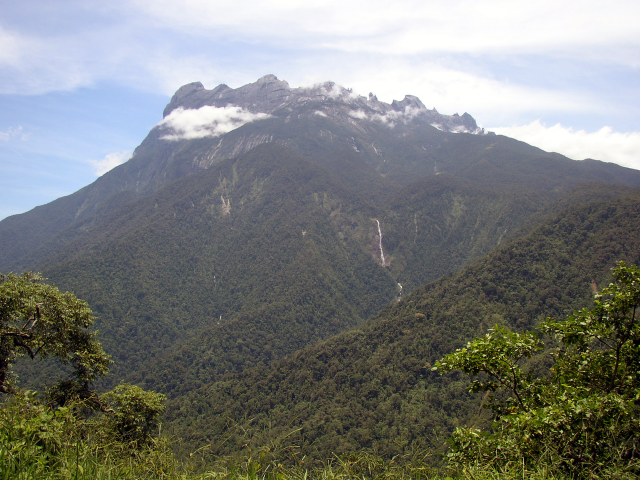9 July 2015
Mount Kinabalu: the day the mountain shook
Posted by Dave Petley
Mount Kinabalu
The Straits Times in Singapore has an excellent article on the events on Mountain Kinabalu in Malaysia on the day of the earthquake last month. Focusing primarily on the party of Singapore school children that was caught in rockfalls on the mountain, the article powerfully describes the earthquake itself and the desperate attempts to get to safety afterwards:
On the Via Ferrata, about 12 to 15 pupils, with their teachers and guides, were on the rock face when boulders tumbled down from the broken peaks of Mount Kinabalu. Amal Ashley Lim, 12, was one of the students who had just started on the Via Ferrata. Linked by a rope to schoolmates El Wafeeq El Jauzy, Navdeep Singh Jaryal Raj Kumar and Sonia Jhala, they were led by teacher Madam Nur Uzaimah Fadzali. Behind them were Daanish Amran, the Singaporean guide, and a Mountain Torq trainer. “Rocks were falling. I almost fell but luckily I grabbed on to my teacher’s legs,” Amal Ashley told The New Paper. She was lucky enough not to be hurt by the falling rocks, which were half the size of car tyres. “They hit my backpack,” she said. Her teacher, Madam Uzaimah, had pulled her under a rock overhang, but went out again to find help. Another pupil, Emyr Uzayr, was saved by teacher Mohamed Faizal Abdul Salam. Mr Faizal cut the rope that bound him and the pupils, before cutting the ropes of Emyr’s harness. He used his body to shield him and two other pupils.
Mountain Torq trainer Hillary Augustinus, 34, was on the Walk the Torq with one group of students when he saw the rocks tumbling down. “When I look up, I can see a wave of rocks falling towards us, small, big boulders, with heavy clouds of dust. The rock face is shaking, we just lean there (on the rock),” he said.He slipped down the slope for a heart-stopping moment, but was held up by his backup safety rope; and through the rocks and dust, he saw a small crack to his right.“Out of instinct, I just crawl… to the crack. All I could do was to put my life in God’s hands,” he said. “It’s helpless, very helpless, you just couldn’t do anything.”When the quake stopped, his hands were bloodied and his right knee was hit by a rock. But he knew he had to move before more rocks fell, so he undid his rope and climbed up.A number of pupils were still clinging on to the rock face, frozen in shock.“I respect them, they were very strong, they were not crying,” he said.“We try to rescue as many as we can, one after another, and send them to the summit trail.”Despite the best efforts of the teachers and trainers, they could not save everyone.
Ten of them – most of whom were from the three groups who had started on the trail – did not live to see the sunrise from Mount Kinabalu.
There is a great deal more detail in the article, which I recommend.
The earthquake triggered extensive rockfalls from Mount Kinabalu. This image, from the Star Online, shows the fresh rockfall scars:
.
This is more or less the same view of Mount Kinabalu from the before the earthquake:
.
The earthquake appears to have triggered some shallow landslides in steep forested slopes and a very large number of rockfalls on the near vertical cliff faces of Mount Kinabalu. Interestingly, the less steep upper faces seem to have been affected far less. A detailed inspection suggests that there are in fact multiple comparatively small rockfall sources across the faces, each of which has triggered the release of material from the cliff face below to create a long rockfall scar. There are so many sources that the rockfalls have effectively removed large sections of the mountain side.




 Dave Petley is the Vice-Chancellor of the University of Hull in the United Kingdom. His blog provides commentary and analysis of landslide events occurring worldwide, including the landslides themselves, latest research, and conferences and meetings.
Dave Petley is the Vice-Chancellor of the University of Hull in the United Kingdom. His blog provides commentary and analysis of landslide events occurring worldwide, including the landslides themselves, latest research, and conferences and meetings.